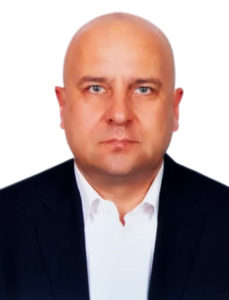Insulation is significant for better IAQ and energy efficiency. What role do innovation and overall perception assume, as the insulation market steers towards growth?

Kishore Deotarase
Insulation plays a significant role not only in maintaining the temperature of a room but also in energy efficiency and Indoor Air Quality (IAQ). Industry representatives suggest that the growth of the insulation market is dependent on a number of factors.
Kishore Deotarase, General Manager, Unigulf, estimates the insulation industry in the United Arab Emirates to be approximately AED 300 billion. “Owing to the growth in demand for projects in the United Arab Emirates, the market is likely to grow by 15% in the next few years,” he says.

Umesh Unni
Echoing Deotarase is Umesh Unni, Regional Commercial Manager, Hira Industries. He insists that Saudi Arabia and Dubai are two major places seeing an increase in growth, as there are projects sprouting in these regions. Elaborating, he says, “Considering the Expo 2020, the UAE will most likely have a higher growth percentage in the years to come.” He estimates a hike in the growth of the insulation market by 15% to 25%, in this year alone. Unni adds that Abu Dhabi is dynamically slower, but not far behind, when compared to the other Emirates.

Ajit S Abraham
Ajit S Abraham, Assistant General Manager, Building Service Products, Leminar Global, offers a different opinion, highlighting that projects have not increased, but the number of players in the market has. “The market is seeing the entry of new polymers and insulation solutions, with closed cell insulation and fibreglass being the common materials used for insulation projects in the United Arab Emirates,” he says.
From traditional to advanced solutions
An evident trend, Unni says, involves seeing manufacturers and end-users move from traditional insulation solutions to more advanced options.
“Advanced solutions, such as closed-foam insulation, not only meet the need for long-term energy efficiency but also help to save on costs in the long run,” he says. And today, he says, end-user preferences are steered towards energy efficiency and durability. Deotarase reveals there is a lack of awareness in the way end-users understand insulation solutions. He says, “An end-user’s understanding of insulation solutions is limited to the brand; however, insulation as a subject can get technical.” Even though the consultant might be able to influence the end-user’s choice of insulation, he says, the final decision still lies with the end-user.

Tomasz Kulik
Echoing Deotarase is Tomasz Kulik, Global Technical Manager, Hira Industries. He says, “Especially when it comes to technical aspects like condensation, anti-condensation, the level of insulation-thickness as per requirement, they are all important factors.” Hence, he says that awareness and education are of the essence, if consumers are to save time, energy and money.

Sarmad Fakhri
Stressing on the need for insulation solutions to adhere to the UAE Fire and Life Safety Codes, Sarmad Fakhri, Managing Director, Kingspan Insulation, says, “There is an emphasis on fire testing and approval for insulation solutions, and we see this through the increase in awareness for stringent fire testing and results.” Elaborating on the Fire and Life Safety Codes, he says that Chapter 10 of the Fire Code: Smoke Control Systems, addresses HVAC systems and must be considered when choosing insulation solutions. Making a call for awareness, Fakhri says that there is a lack of drive to work towards energy efficiency. He says, “As long as energy bills are low and, as in most cases, the tenants pay the DEWA bills, there exists no real incentive for building owners to look at energy-efficient solutions, such as pre-insulated ductwork.”
Innovation and contribution to HVAC
“The latest is pre-insulated ductwork,” says Fakhri, while highlighting the latest in insulation technology. “Ductwork has traditionally been constructed using galvanised sheet steel with insulation and is usually installed as a separate activity; however, pre-insulated ductwork has integral insulation, which ensures minimum thermal bridging,” he explains. The solution, he says, has low levels of air leakage and, when fabricated correctly, it runs more efficiently while also conserving energy. Elaborating on the benefits of pre-insulated ductwork, he says, “It is extremely lightweight, weighing as little as 18% of the equivalent of galvanised sheet steel ductwork and its lightweight nature means that several sections can be joined together at the floor level before being installed.” A side benefit, he adds, is that it is particularly well-suited to projects where space and structural loading is an issue, for instance, projects with long-spanning roofs, such as airports and malls.
Using non-fibrous, closed-cell materials has IAQ benefits, highlights Fakhri. “A non-fibrous rigid insulation core, minuses the risk of loose fibres entering the air stream through the ductwork,” he says. Since distributed air does not come into contact with the insulation material that produces loose fibres, he says, the built-in antimicrobial protection negates the risk of bacterial growth on the ductwork system.
Energy efficiency and insulation Energy efficiency in insulation refers to avoiding energy loss, says Abraham. “The level of thickness used in an insulation solution is crucial and differs for internal and external pipework. For internal pipework the thickness should ideally be 19mm and 25mm for external pipework,” says Abraham. Using reflective material, like jackets, helps, he says, and, when coupled with the right thickness, prevents gaps between the insulation.
“Low ductwork air-leakage can yield significant electrical consumption and savings,” says Fakhri. Pre-insulated ductwork, he says, can have a fraction of air leakage rate, offering energy efficiency and cutting operational carbon dioxide (CO2) emissions, he adds. This, he says, can also reduce the overall energy used to operate the building. Governments today are talking of setting targets to reduce emissions, in order to tackle climate change, he says.
Dubai’s Integrated Energy Strategy and Abu Dhabi’s Vision 2030 are all examples of such steps.
Even though new technology and innovation might be available, the level of acceptance in some cases is slow, highlights Kulik. He says, “Some companies are very adventurous and like to try out new technology, while others take time and prefer to stick to old methods.” Innovation, he says, has played a significant role in contributing to energy efficiency; however, education must, at all times, take the front seat. “If we are to make an impact, we must be welcoming to new technology and insulation solutions, he says.
Highlighting another challenge, Abraham points to insulating large facilities, as yet another area where compromises are made. “Condensation is a huge problem,” he says. “If you notice, a number of new buildings, nowadays, have droplets coming in, and this is because the thickness of the insulation material has been compromised upon.” This is done to save on initial costs, but such compromises, Abraham adds, can have an effect on IAQ. “The end-user will have to bear the brunt of such mistakes by paying for maintenance and repair,” he says. “It is important that zero fire rated products are used, which undergo both factory and third-party testing.”
Echoing Abraham, Unni reiterates that cost has always played a major role when a client makes a decision. He says this also meant that energy efficiency often used to be compromised on. However, Unni says, “Today, local manufacturers offer insulation solutions, which are premium in quality and are reasonably priced, hence there arises no need for a compromise.”
Copyright © 2006-2025 - CPI Industry. All rights reserved.